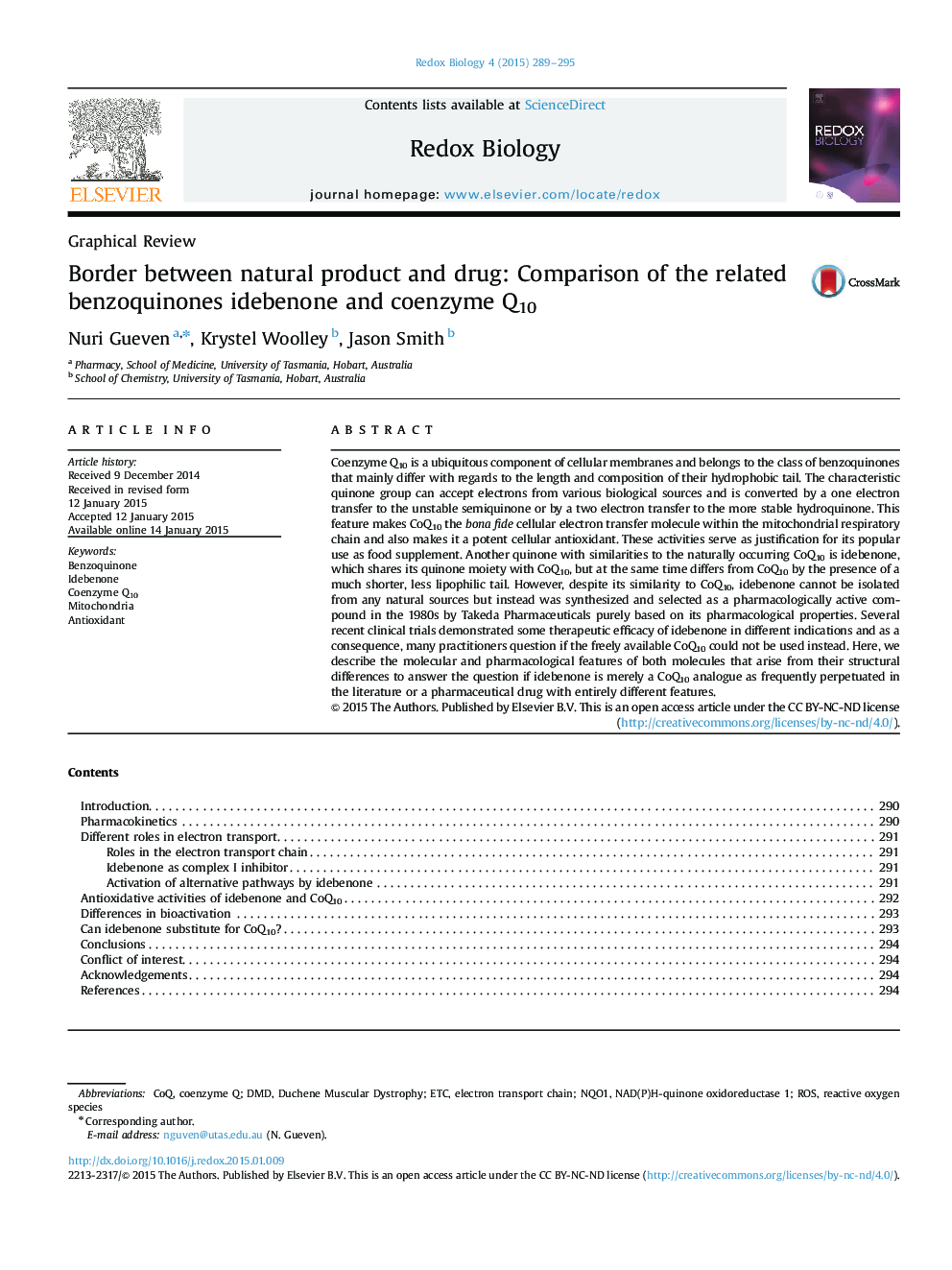| کد مقاله | کد نشریه | سال انتشار | مقاله انگلیسی | نسخه تمام متن |
|---|---|---|---|---|
| 1923065 | 1535846 | 2015 | 7 صفحه PDF | دانلود رایگان |

●The benzoquinones CoQ10 and idebenone have vastly different solubility.●Both molecules need to get activated by cellular reductases.●Due to their solubility both molecules are in different cellular compartments.●Therefore, both quinones are activated by different enzymes.●Thus, their solubility strongly determines their biological activities.
Coenzyme Q10 is a ubiquitous component of cellular membranes and belongs to the class of benzoquinones that mainly differ with regards to the length and composition of their hydrophobic tail. The characteristic quinone group can accept electrons from various biological sources and is converted by a one electron transfer to the unstable semiquinone or by a two electron transfer to the more stable hydroquinone. This feature makes CoQ10 the bona fide cellular electron transfer molecule within the mitochondrial respiratory chain and also makes it a potent cellular antioxidant. These activities serve as justification for its popular use as food supplement. Another quinone with similarities to the naturally occurring CoQ10 is idebenone, which shares its quinone moiety with CoQ10, but at the same time differs from CoQ10 by the presence of a much shorter, less lipophilic tail. However, despite its similarity to CoQ10, idebenone cannot be isolated from any natural sources but instead was synthesized and selected as a pharmacologically active compound in the 1980s by Takeda Pharmaceuticals purely based on its pharmacological properties. Several recent clinical trials demonstrated some therapeutic efficacy of idebenone in different indications and as a consequence, many practitioners question if the freely available CoQ10 could not be used instead. Here, we describe the molecular and pharmacological features of both molecules that arise from their structural differences to answer the question if idebenone is merely a CoQ10 analogue as frequently perpetuated in the literature or a pharmaceutical drug with entirely different features.
Figure optionsDownload as PowerPoint slide
Journal: Redox Biology - Volume 4, April 2015, Pages 289–295